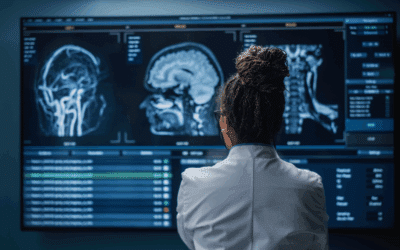https://www.youtube.com/watch?v=6VXD87-YQhg
Are you someone that struggles with headaches or migraines? If so, you’re in the right place.
Many times, a patient experiencing a headache or migraine will go down a somewhat hopeless road, trialing migraine medications and seeing multiple migraine specialists. Within the next several paragraphs my goal is to provide you with an alternative view and one that can provide hope to even the most severe migraine cases.
First, let’s start with how a migraine diagnosis is typically made through traditional western medicine.
There are many unknowns in the world of migraines as there is still confusion to what causes a migraine. Dr. Weil, an influential medical doctor, states “Migraines are severe, disabling headaches that affect up to 17 percent of women and six percent of men. The disorder has many variants, often making diagnosis difficult. Migraines are unpleasant for patients, frequently incapacitating them for hours or even days at a time, as well as being frustrating for doctors who often find that the condition resists their best efforts at treatment.”
During a patients first visit for migraines, we find that each presents with a slightly different set of symptoms. These symptoms are important as a diagnosis is typically provided based on a patient’s symptom presentation rather than an objective test. It is not uncommon to hear of a patient receiving multiple tests such as MRI’s, CT scans or blood work from a migraine clinic without any conclusive findings. Due to this subjective nature of a migraine diagnosis, it can be very difficult for a migraine doctor to make an accurate diagnosis. Even a neurologist who focuses on migraine pain management will have a difficult time finding a proper diagnosis. There are dozens if not hundreds of variations of migraines or headaches and each diagnosis may have a slightly different treatment approach. Three of the main diagnoses made in-clinic are cluster headache, migraine and tension type headache. These three have differences in treatment approach, which makes getting the correct diagnosis crucial.
So, let’s focus on migraines and migraine treatment. When you receive a migraine diagnosis there are generally two categories of medication for migraine symptoms: preventative and abortive. Many patients will go through several different options in each category with varying degrees of effectiveness. Each medication has side effects, and none are intended for long-term use. If medication management fails, patients may find themselves receiving quarterly Botox injections from a migraine specialist or think they should see a neurologist for migraines. The standard of practice is to trial medications, starting with the most conservative approach, in order to hopefully reduce the frequency and intensity of the patient’s symptoms. There is little to no hope or promise of being free of migraines with this approach. This all goes back to us not having clarity to the underlying mechanism of migraines as understanding the mechanism dictates the appropriate treatment approach.
While medication has its place and has been very helpful for many, there are two groups of people that comprise a significant portion of migraine sufferers. Those who do not want to take medication and those who trial medication, but without significant relief. Even those who find medication to significantly reduce or resolve their symptoms, it tends to not be a long-term solution.
Here is where we like to infuse hope back into this situation.
There is a lesser-known but research-backed approach to treating headache and migraine symptoms that involves no medication, takes about two months and provides a more lasting solution. The scenario above may involve a primary care provider and multiple specialists who perform exams and prescribe medication, but the element that is skipped over is a proper movement exam.
Why is it important to have a proper movement exam?
The neck is made up of 8 different joints that all work together allowing us to move our head in all different directions. Two of those joints are responsible for the bulk of our movement and are crucial to assess. Anything from poor posture to a car accident and whiplash injury can lead to these two joints losing their ability to perform their crucial role in head movements. If movement is lost our body does a good job of compensating, but over time there is tension and irritation that develops in the upper part of the neck. This then sends a pain signal to the brain, but the brain can perceive pain in this area as nausea, sensitivity to light/sound, head or facial pain and even visual disturbances. These are all the symptoms that patients with migraines present with but should be evaluated and treated much differently than the medication approach outlined above.
Any patient that presents with headache or migraine symptoms should be screened for a loss of movement in the neck, even as early as their first visit for migraines. These symptoms coming from the neck are actually more prevalent than we think, but is hardly ever assessed properly or treated with an effective intervention. The most effective way to evaluate for this underlying neck restriction is to specifically assess how each segment is moving. A general screen of the neck will miss these restrictions nearly every time. It takes a skilled practitioner or migraine specialist with a specific exam to properly assess the neck. Once a restriction is found it is likely we will be able to change the patient’s symptoms within the first couple visits. This is a break through moment as it provides an explanation and effective treatment strategy within the span of a couple 30 minute sessions.
So how do we treat it?
The approach to restoring movement in the neck is very simple. Not necessarily easy, but simple to understand. It is important to utilize manual therapy or a “hands-on” approach provided by a physical therapist specializing in migraines that is able to restore movement in specific segments of the neck. At Novera: Headache Center, Dr. Taves has specialized in migraines as his specific focus in his career and in doing so has set up one of the first Physical Therapy run headache and migraine treatment centers.
Each patient during their first visit for migraines will receive a specific movement evaluation that most likely will reveal at least one if not several joints in the neck that will require treatment. Restoring a joint to normal movement takes time, on average a patient will be provided with two thirty-minute visits at twice a week for 6-8 weeks as part of their migraine treatment. The great part about this process is that once the neck is moving as it should most patients experience more lasting migraine relief. A key element to lasting migraine relief is being pro-active with your care and considerate of your body’s migraine triggers or sensitivities during and after your treatment. We make sure to address any potential triggers and provide you with the education needed to avoid or manage them on your own. Towards the end of care, each patient is provided with a specific program that allows them to maintain their improvements, providing a more natural, self-care approach to migraine pain management.
Our method provides hope. We want you to get back to the things you love without reliance on headache or migraine medicine.




